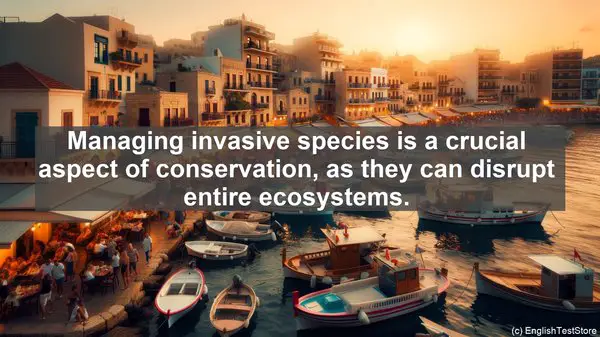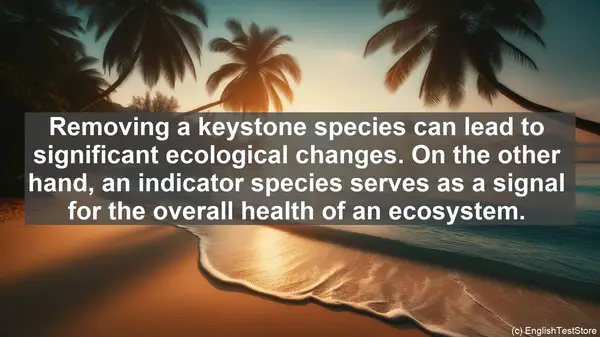Introduction: The Importance of Language in Conservation Ethology
Welcome to our channel. Today, we’re diving deep into the fascinating world of conservation ethology. While this field offers incredible insights into animal behavior and ecology, it also presents a unique challenge – the complexity of its vocabulary. In this lesson, we’ll address the top 10 words that often lead to confusion. So, let’s get started!

1. Habitat vs. Ecosystem
One of the most fundamental distinctions in conservation ethology is between habitat and ecosystem. While they may seem similar, they have distinct meanings. A habitat refers to the physical environment where an organism lives, including its resources and conditions. On the other hand, an ecosystem is a more comprehensive concept, encompassing not just the living organisms but also the interactions and energy flow within a given area. Understanding this difference is crucial when studying the impact of environmental changes on wildlife.
2. Endangered vs. Threatened
When it comes to species conservation, the terms ‘endangered’ and ‘threatened’ are often used. But what sets them apart? ‘Endangered’ refers to a species that is at a high risk of extinction, with its population critically low. ‘Threatened,’ on the other hand, indicates a species that is likely to become endangered if the current threats persist. Both categories require immediate attention, but the level of urgency may differ. By accurately using these terms, we can convey the severity of a species’ situation.
3. Migration vs. Dispersal
Migration and dispersal are two types of animal movements, but they have distinct patterns and purposes. Migration is a regular, often seasonal, long-distance movement of a population, usually between different habitats. Dispersal, on the other hand, refers to the movement of individuals away from their birthplace, often in search of new territories. While migration is a coordinated effort, dispersal is more individualistic. Understanding these patterns helps us track population dynamics and plan conservation strategies.
4. Keystone Species vs. Indicator Species
Keystone and indicator species are both critical in ecosystem monitoring, but their roles differ. A keystone species has a disproportionately large impact on its environment, often shaping the entire ecosystem. Removing a keystone species can lead to significant ecological changes. On the other hand, an indicator species serves as a signal for the overall health of an ecosystem. By monitoring indicator species, we can identify potential issues and take timely action. Both types are vital for effective conservation management.
5. Biodiversity vs. Species Richness
While biodiversity and species richness are related, they capture different aspects of ecological diversity. Biodiversity encompasses not just the number of species in an area, but also their genetic variation and the complexity of their interactions. It’s a more holistic measure of ecological health. Species richness, on the other hand, focuses solely on the number of species. Both metrics are valuable, but biodiversity provides a more comprehensive understanding of an ecosystem’s dynamics.
6. Invasive vs. Non-native Species
Invasive and non-native species are terms often used interchangeably, but they have distinct implications. A non-native species is simply a species that is not native to a particular area. It may or may not have negative impacts on the ecosystem. In contrast, an invasive species is one that not only establishes itself in a new habitat but also has a detrimental effect on the native species and their environment. Managing invasive species is a crucial aspect of conservation, as they can disrupt entire ecosystems.
7. Extinction vs. Extirpation
While extinction is a well-known term, ‘extirpation’ is less commonly used. Extinction refers to the complete disappearance of a species from the entire planet. Extirpation, on the other hand, is the local extinction of a species in a specific geographic area, while it may still exist elsewhere. Recognizing the difference is important, as it helps us understand the distribution and vulnerability of species, and design targeted conservation efforts.
8. Primary Succession vs. Secondary Succession
Succession is the process of ecological change over time, but it can occur in different contexts. Primary succession refers to the colonization and development of an ecosystem in a barren, lifeless area, such as a newly formed volcanic island. Secondary succession, on the other hand, happens in an area that has been disturbed, but still retains some soil and seed bank. Understanding these types of succession helps us predict and facilitate the recovery of ecosystems after disturbances.
9. Altruism vs. Cooperative Behavior
Altruism and cooperative behavior both involve individuals working together, but they have different underlying motivations. Altruism refers to selfless actions that benefit others at a cost to the individual. It’s often seen in the context of kin selection, where individuals prioritize the survival and reproduction of their close relatives. Cooperative behavior, on the other hand, can be mutually beneficial for all involved. Distinguishing between these terms helps us understand the complex social dynamics in animal groups.
10. Ethology vs. Ecology
Lastly, let’s address the distinction between ethology and ecology. While they are closely related, they have different focuses. Ethology is the study of animal behavior, including its causation and function. It often involves detailed observations and experiments. Ecology, on the other hand, is the broader study of the interactions between organisms and their environment. It encompasses not just behavior, but also aspects like population dynamics and nutrient cycling. Together, these fields provide a comprehensive understanding of the natural world.

